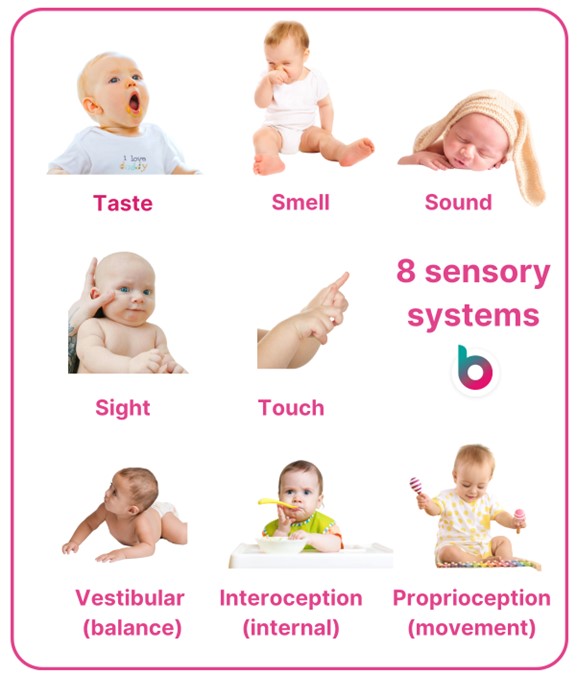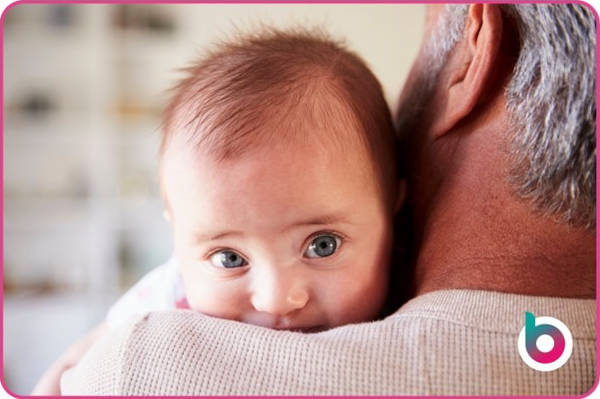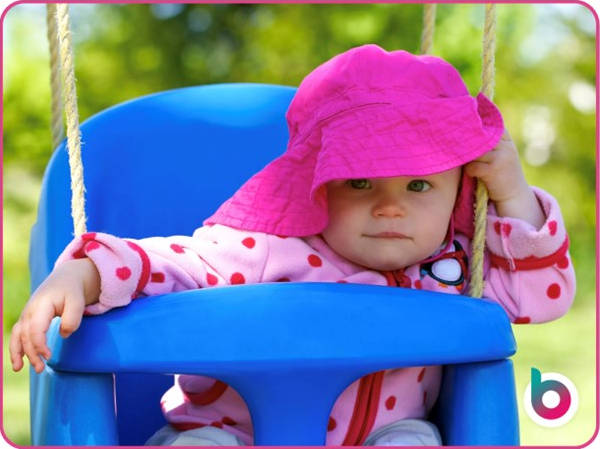The vestibular system is one of eight sensory systems. As nursery practitioners, you’ll know a lot about physical development and why it is so important. What’s less spoken about is the science behind movement.
If you’ve ever wondered why you get motion sickness, that’s your vestibular system getting confused.
Your eyes tell your brain you’re still, but your inner ear senses movement (due to inner ear liquid moving). The mismatch of information can then bring on the queasy feeling all too familiar to many of us on a long car journey.
We spoke to Sarah Cooke, a paediatric Occupational Therapist who works for the Autism Assessment Team at Alder Hey Children’s Hospital.
She shared invaluable advice for nursery managers and practitioners to help all children develop their vestibular system.


What is the vestibular system?
The vestibular system is like an internal compass, helping balance, coordination, movement, focus, and concentration. To put it simply, it is the liquid inside your inner ear. When you move, it sloshes around, sending movement cues to the brain.
‘The more a child moves, the more the liquid moves around, developing their vestibular systems. Similarly, if a child favours more sedentary activities, like reading or painting, their vestibular system may not be as developed.’
Sarah Cooke
The vestibular system is like an internal compass, helping balance, coordination, movement, focus, and concentration. To put it simply, it is the liquid inside your inner ear. When you move, it sloshes around, sending movement cues to the brain.
The proprioceptive system: the calming system
We can’t talk about the vestibular system without mentioning the proprioceptive system, another of the eight sensory systems.
The two work closely and help children move confidently and feel secure in their bodies. While the vestibular system detects movement and balance, the proprioceptive system provides awareness of where our body is in space by sending signals from our muscles and joints to the brain.
Together, both systems create smooth, coordinated movement and help regulate energy levels in toddlers.
The proprioceptive system is often called the ‘calming system’ because deep pressure and muscle engagement can help children feel grounded and in control. Swimming and yoga are great for proprioceptive input.

It’s something to be aware of when planning your physical development provision. In particular, self-regulation activities, which we know, were a hot topic of Ofsted inspection themes in 2024.
It’s important to include physical development activities that stimulate both sensory systems. Lots of EYFS activities tick off sensory play. The difference between a good nursery and an exceptional one all boils down to knowledge and intentional planning.
Why is the vestibular system important for babies and toddlers?
A well-developed vestibular system lays the foundation for balance, coordination, spatial awareness, and even focus and learning.
‘While we don’t have a clear-cut age at which the vestibular system is considered ‘fully developed,’ we do know that it continues to strengthen through movement and activity.
'However, like a muscle, if it isn’t used, it weakens over time. This is why older people are more prone to falls: their vestibular system naturally deteriorates, making balance and coordination harder.’
Sarah Cooke

If children aren’t given enough opportunities to develop their vestibular system, they may struggle with basic motor skills, feel anxious about movement, or have difficulty with their posture, which can impact their comfort when sitting still.
Important note: Always be mindful when encouraging children to complete vestibular activities. All children have a different ‘window of tolerance’: it is vital practitioners work within the child’s comfortability and build up vestibular development over time.
Physical development: children to watch out for
Some children naturally seek out active play, climbing, running, and spinning without hesitation.
But what about the children who prefer quieter activities – those who love to paint, read, or do puzzles? They still need movement to strengthen their vestibular system, but they may not seek it out themselves.
These children are at a higher risk of vestibular underdevelopment, leading to posture challenges and difficulties with coordination and balance. Some studies have identified a connection between underdeveloped vestibular systems and concentration capacity.

While many children naturally engage in vestibular-rich activities, some may need extra encouragement and support. When recording and tracking EYFS physical development, it’s important to keep an eye on children who avoid movement or struggle with certain activities.
Reluctance to engage with active play can be the first sign of an amber flag for physical development milestones.
Using your knowledge of the sensory systems, you can identify those who may be at risk of vestibular underdevelopment.
Sarah recommends to look out for children who:
- Avoid climbing, swinging, or spinning, especially if they seem nervous about movement or prefer to stay on the ground
- Struggle with balance or coordination – frequent falls, difficulty jumping, or hesitation on uneven surfaces can be signs of a weaker vestibular system
- Find sitting still difficult – children aren’t meant to sit still, the EYFS is underpinned by play for a reason! That being said, some children may move excessively or slump when sitting still because their bodies haven’t developed the core stability needed for controlled movement
- Seem overly cautious or anxious about physical play – these children may avoid rough-and-tumble activities and prefer to watch rather than join in
- Have difficulty with spatial awareness – they may bump into things, misjudge distances, or struggle with activities like catching a ball (again, children’s proprioceptive systems are developing, they are by nature ‘clumsy’
On the other end of the scale, some children may seek excessive movement, spinning constantly, crashing into things, or struggling to regulate their activity levels. These children may be trying to get the vestibular input their bodies crave.
Early identification is the new priority across early years. Ofsted guidance updates (February 2025) highlight the need to pinpoint concerns early on for immediate support and intervention.
Expanding your practitioner’s knowledge of the vestibular system helps to demonstrate your commitment to early identification.
Helping to gently encourage movement in a way that feels safe and engaging to those who may have underdeveloped vestibular systems. Also planning for those children who crave the input of vestibular-rich activities.
How do nurseries develop a child’s vestibular system?
Nurseries are the perfect place to support vestibular development because they are naturally play-rich environments filled with opportunities for movement. Every time a child jumps, spins, rolls, or hangs upside down, they strengthen their vestibular system without even realising it!

Here are some fantastic vestibular-boosting activities to try in your setting:
| Activity | Ideas |
| Swinging | On swings, rope swings, or wobbly bridges. This helps with balance and spatial awareness |
| Spinning | Using sit-and-spin toys, turning in circles, or rolling down a hill. Spinning is a great way to activate the vestibular system |
| Rocking | In a rocking chair, on a seesaw, or a practitioner’s lap. Gentle rocking is calming and helps with balance |
| Jumping | From stepping stones, on trampolines, or even simple star jumps. This will strengthen a toddler’s coordination and stability |
| Climbing | On climbing frames, ladders, or soft play structures. Building that essential core strength and spatial awareness |
| Rolling | Across mats, down gentle slopes, or in tunnels. Rolling helps with body awareness and head and neck control |
| Dancing | Moving to music, twirling, and balancing on one foot. The most fun way to engage the vestibular system, and let’s not forget the language and communication development options available, too! |
‘It’s important for children to develop their prone positioning. A non-medical term for this is tummy time. We often stop tummy time when children can walk and run –but we shouldn’t!
'Encourage your toddlers to complete a fine motor task lying on their stomachs. It will develop core strength and neck stability and ultimately improve their posture when they begin table-top activities.’
Sarah Cooke
Top tips for nursery managers from Sarah Cooke
When planning your EYFS physical development provision, it’s essential to ensure that all children are given opportunities to build not just their gross and fine motor skills, but also their eight sensory systems (including the vestibular and proprioceptive).
Here’s how you can be intentional in your approach (and impress Ofsted while you’re at it!):
- Provide a variety of movements
- Support all learners
- Think about sensory-rich play
- Incorporate proprioceptive activities (like yoga, jumping games, push and pull play)
- Observe, record progress and adapt
- Make physical play a daily priority
By embedding purposeful movement and sensory-rich experiences into your physical development provision, you’re not only helping children build essential skills for life but also demonstrating clear intent, implementation, and impact – exactly what Ofsted wants to see!
We regularly interview experts in the early years field to bring you the best and most up-to-date practice. Sign up to our free Blossom blog to get the articles straight to your inbox.